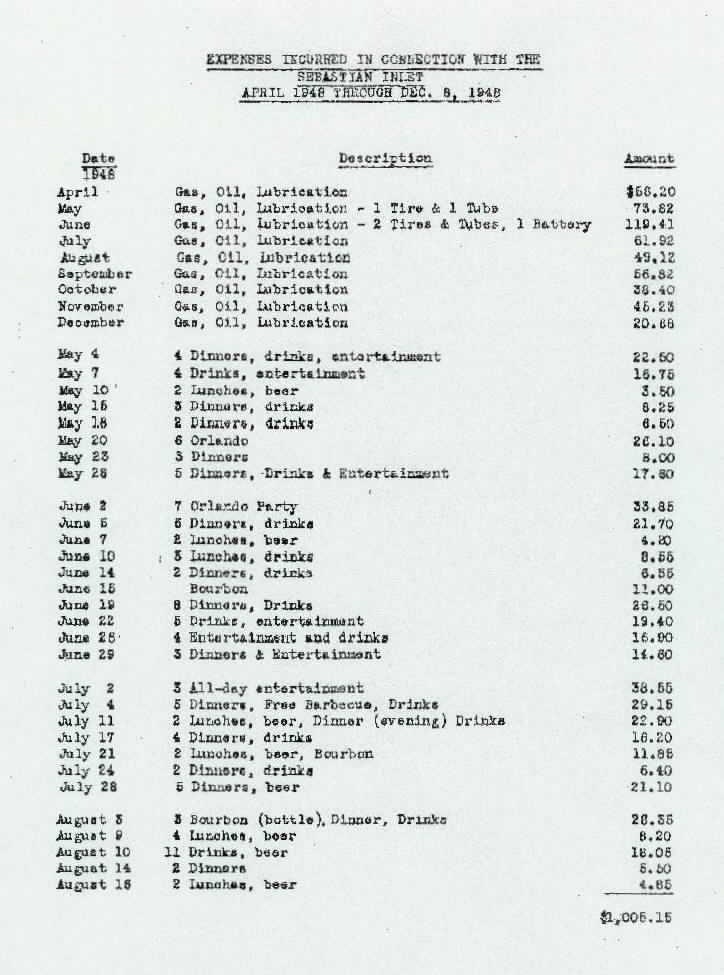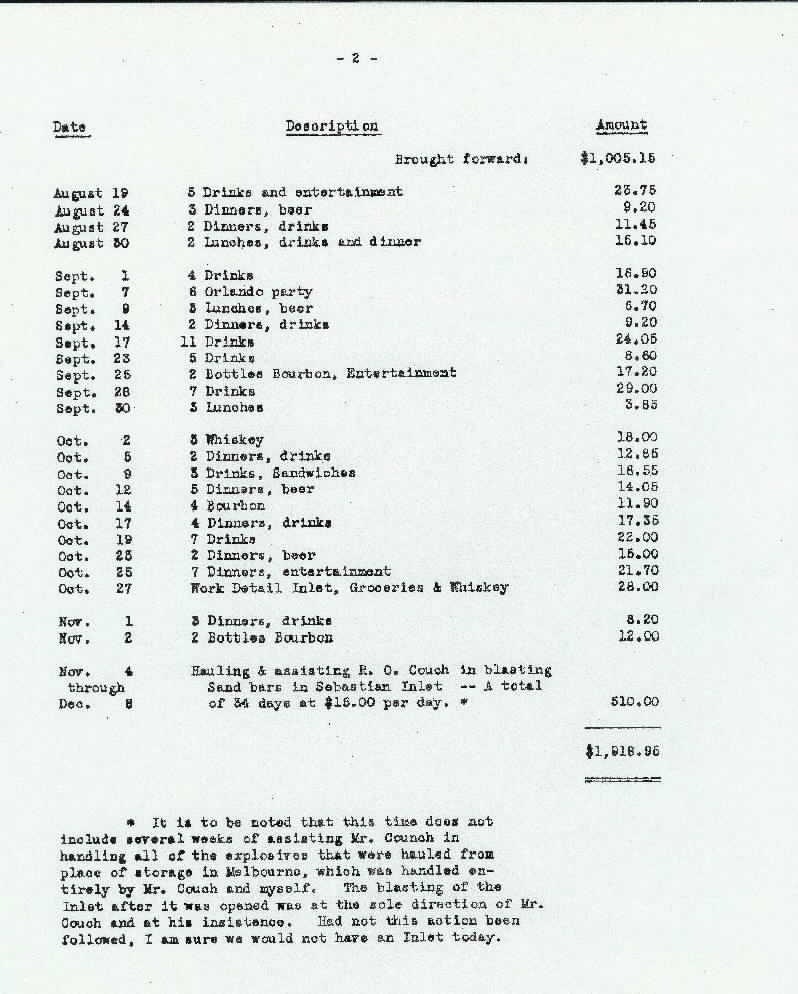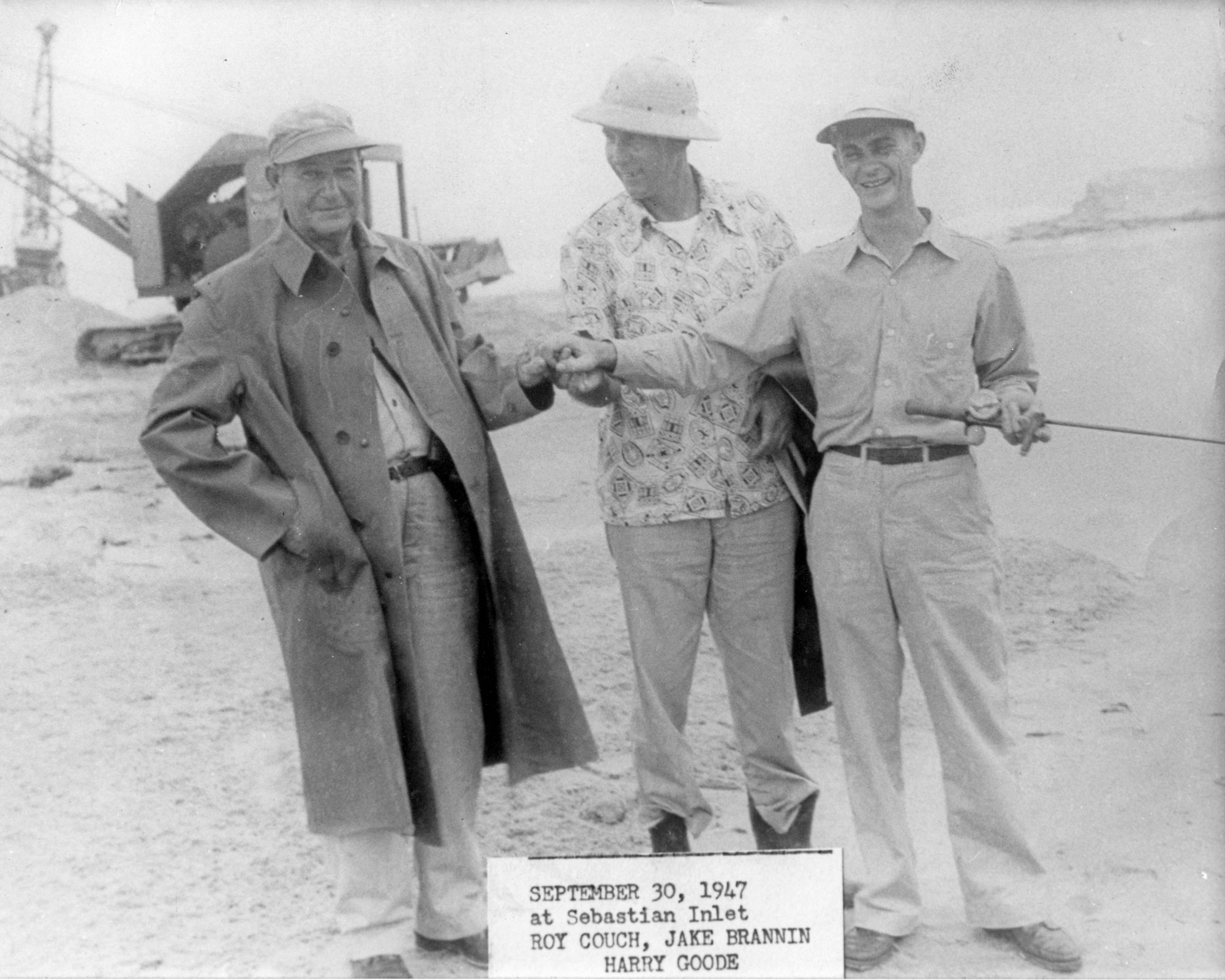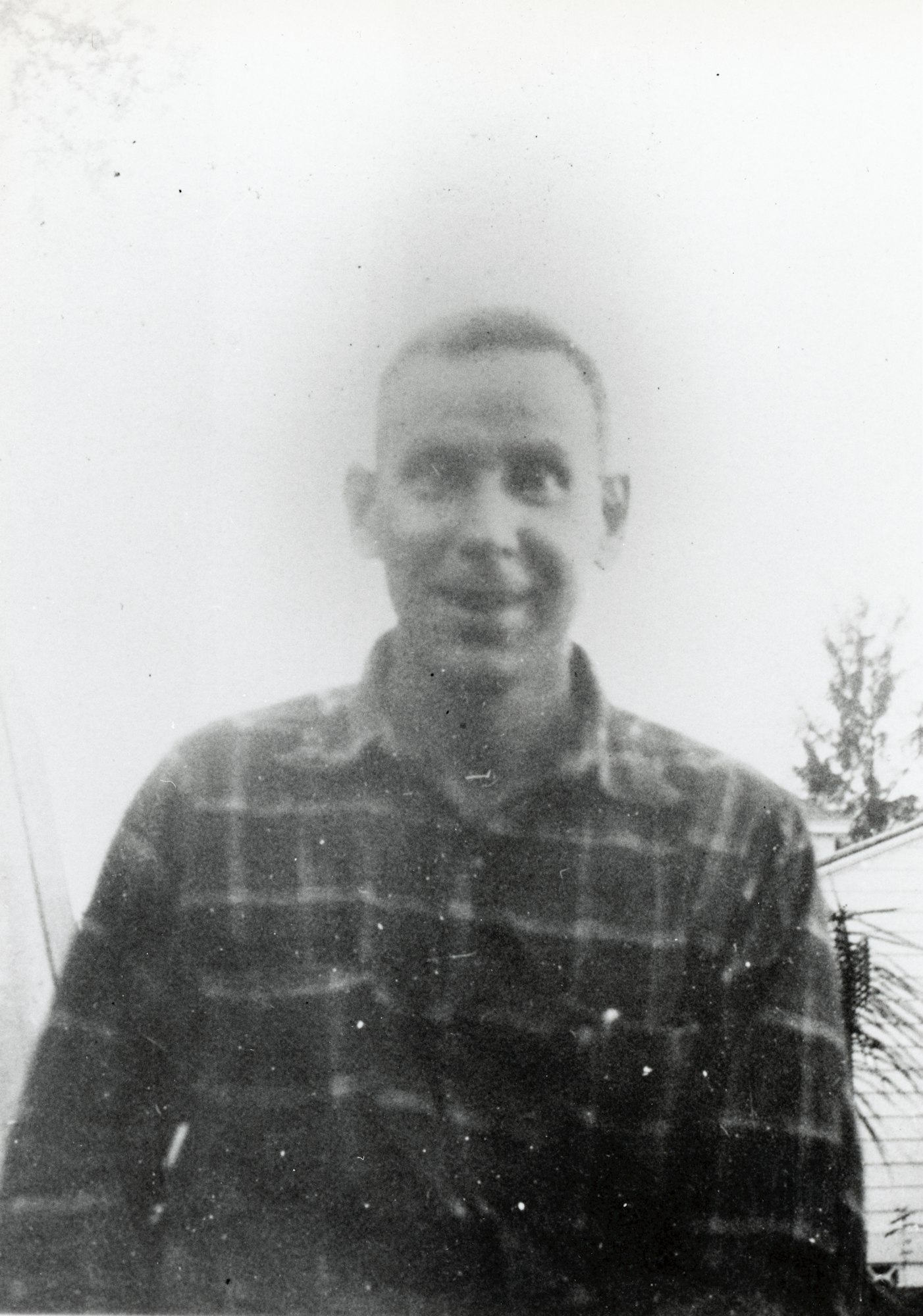A Tale of Whiskey and Dynamite
.JPG?ixlib=rb-1.1.0&w=2000&h=2000&fit=max&or=0&s=c1a91253c14a88006c42ebdde6b752af)
Richard Goode gently lifts an old wooden case from a display stand at Harry Goode’s Outdoor Shop, the iconic store in downtown Melbourne that his grandfather opened in 1946.
“There were six of these boxes up in the attic of the store,” says Goode, a fifth generation Melbourne Floridian who recently sold the store but continues to work there. “My grandfather used to store records in the boxes.”
The words stenciled on the box read:
Sebastian Inlet District
Indian River Bluff
Brevard County
Precinc 28 (most likely a misspelling of “precinct”)
The backside of the box warns:
High explosive (“s” missing)
Dangerous
Goode, holding the box, poses for a photo. Beads of fine black powder leak from its corner onto the floor of the store. Gunpowder.
This is where the story gets interesting. It is a tale about a group of men whose plucky optimism and collective ingenuity sparked the rebirth of Sebastian Inlet in the wake of World War II.
.jpg?ixlib=rb-1.1.0&w=2000&h=2000&fit=max&or=0&s=7d5ba5a0305961fc1c74ee9294fa3b80)
A little about Richard Goode’s grandfather, Harry Goode, Sr. You’ll find his name everywhere in the regional history books if you do a little digging. The slender, outgoing grocery store owner served on the Sebastian Inlet District Commission from 1948 to 1976, as well as the Melbourne City Council from 1949 to 1951. His son, the late Harry Goode, Jr., followed in his footsteps, carrying on the family legacy of operating the store and serving six terms as Melbourne’s mayor (1979-1986 and 2004-2012), as well as a member of the Florida House of Representatives for 14 years. As a Sebastian Inlet District Commissioner, Harry Sr. was a vocal proponent of keeping Sebastian Inlet open and maintained.
Sebastian Inlet is manmade. Historians believe a colorful character named D. P. Gibson attempted to cut a channel in 1872 and again in 1886. By 1905, there were at least six substantiated attempts to open a “cut”, but all were closed by sand, storms and other natural causes almost as soon as each cut was opened.
In 1941, a strong Nor’easter closed the inlet once again, and the attack on Pearl Harbor on December 7, 1941, ensured the inlet would remain closed for the next few years due to national security concerns. Towers erected along the coast were manned by citizen spotters scanning the coast for German U-boats. Also, during the war, the U.S. navy used the inlet property as an amphibious training ground for its demolition squads.
.jpg?ixlib=rb-1.1.0&w=2000&h=2000&fit=max&or=0&s=f01e9d05092c8678203ed464a2495c1f)
Efforts to open the inlet began again in 1947, led by Roy Couch (who also served on the Sebastian Inlet District), Harry Goode Sr., Jake Brannin and others. They spent months shuffling mountains of storm-tossed sand with bulldozers as they attempted to cut a fresh inlet channel, but none of the cuts lasted long.
However, Harry Goode Sr., Couch, Brannin and the others came up with an unorthodox idea. In 1948, using surplus U.S. Navy demolitions left behind, the group blasted the inlet open. The inlet has remained open ever since.
Sebastian Inlet District commissioners assuming the roles of demolition experts is just half the story. District records reveal that in 1949, Brannin submitted to the District a typed expense report for the construction work and blasting completed the prior year. It included more than 40 entries for beer, bourbon, lunches, dinners, whiskey, and “parties.” Brannon’s invoice mentions that the lubricated group was also hauling dynamite.


But the gang got the job done.
“My grandfather sat on the Sebastian Inlet District Commission for nearly 40 years and never took a dime for his service,” Richard Goode says, thumbing through the pages of a Sebastian Inlet history book (available for purchase at the Sebastian Inlet Fishing Museum). He points to a black and white photo of his grandfather, shirtless, lanky, his teeth clutching a pipe. “He loved people. He loved the inlet. He always had a pipe or a cigar but he never actually sucked one. There were spittoons all around the store when he owned it.”
Glen Outlaw, the new owner of Harry Goode’s, has a deep respect for local history and of course, continues to operate the store with Richard Goode by his side. He says the wooden dynamite cases will remain on permanent display at the store. They’re a reminder of a time when persistence, sweat, whiskey and dynamite were enough to complete a public works project that continues to benefit everyone today.


.jpg?ixlib=rb-1.1.0&w=2000&h=2000&fit=max&or=0&s=d1a7dfe012f443013163764c33680eea)
%20(1).jpg?ixlib=rb-1.1.0&w=2000&h=2000&fit=max&or=0&s=c578bc89d12aed602d5eb5f4104caee7)
.jpg?ixlib=rb-1.1.0&w=2000&h=2000&fit=max&or=0&s=57e7d15b8f4f8d856e7e6cb9828f1f41)

At the Sebastian Inlet District, we strive to preserve and share the 100-plus year history of the storied waterway? Do you have historic photos or documents related to the inlet? If so, contact the District's public information associate, Ed Garland, at 321 724-5175 or email him at egarland@sitd.us. He loves sharing stories about the inlet.
Published February 22, 2023
